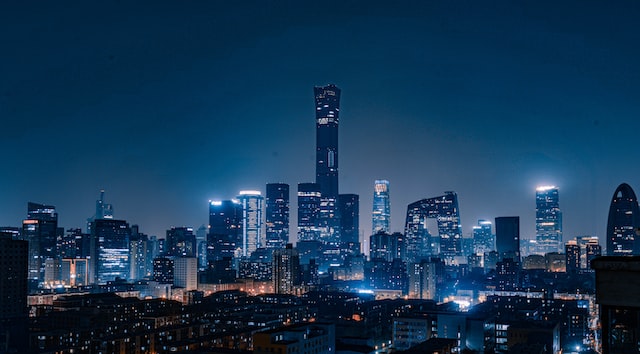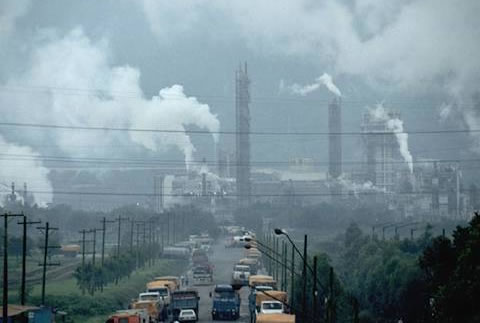by DGR News Service | Oct 16, 2016 | Rape Culture
Society must choose whether women count as human
Lierre Keith / Deep Green Resistance
Feminism has always been a contested area of politics. Fierce arguments centre on what it is, and why we need it. The best definition I know is from Andrea Dworkin: “Feminism is the political practice of fighting male supremacy on behalf of women as a class.” In one elegant sentence, she names both the problem ― male supremacy ― and the solution ― political action.
Implicit in those 16 words are also the two requirements of the human heart: love and hope. It is an act of love to notice women. Women are on display everywhere of course ― naked, for sale, the coin of the realm in a pornographic culture ― but being an object is the opposite of being human. Noticing the harm that is being done ― insisting that it is harm ― starts from love.
Such noticing tends to have an inverse relationship to hope. When harms against a people are both vicious and everyday, hope becomes a combat discipline. But, whether grim or glad, hope is possible only because change is possible. This is the promise of feminism: as endless as the horrors seem, they could end. We, as a society, could end them.
Armed with love and hope, I travelled to London recently for a conference on male violence and how we might end it. I left the US still braced against the details that had come out of Ohio: three women, one six-year-old girl, a basement strung with chains ten years long.
I arrived in London to news of Mark Bridger’s trial: his catalogue of images of murdered girls, his library of sadistic child-porn, the stalking that escalated from online to real life. This meant real death to a perfect promise of a girl named after spring. Her parents are now condemned to a deep winter of grief; how they will survive is anyone’s guess.
Then there was the long fall of Chevonea Kendall-Bryan, the 13-year-old who fell to her death from the window of her home, having suffered sexual bullying. Longer still was the fall from human to object, through rape, and more rape, landing finally on the unyielding surface of complete public violation. Does it matter whether she jumped or fell? Her life was shattered either way.
This is where we stand or fall as a society. We will have to choose. Right now, our society is choosing to make cruelty normal. We are choosing saturation in sadism. The choice turns on whether women count as human.
A few brute facts will answer. Globally, one in three women will be raped or beaten in her lifetime. Half of all sexual assaults are committed on girls under 16: might as well start the lesson early. In the UK, a woman is raped every nine minutes. There are plenty more numbers, and inside each and every one are the broken shards where body and soul, self and world, once met.
The numbers should speak for themselves, but numbers don’t actually speak, of course. They need human voices to carry them. The result of subordination, though, is always silence. Silence is what happens when people are turned into objects. Violence will do that. Sexual violence especially will do that. Sexual violence against children is a shroud of silence that can take a lifetime to unwind.
Amnesty International reports that rape is the most traumatic form of torture. In fact, women who have survived prostitution have higher rates of post-traumatic stress disorder than soldiers who have survived combat, which is to say that the war men are waging against women is in many ways worse than the wars they inflict on each other.
If you need convincing, type the word “rape” into Google images. Or, if you have the stomach and the spiritual stamina, try “torture porn”. What you will see is not entertainment, or sex, or freedom. What you will see is hell. What you will also see is that men by the million have been there before you.
We need feminism because, without it, the realities of women’s lives are unspeakable ― each woman cut adrift in a hostile, chaotic sea. Apply feminism, and that chaos snaps into a sharp pattern of subordination ― from the small, daily insults to body and soul, to the shattering traumas of incest and rape.
The crimes that men commit against women are not done to women as random individuals: they are done because women belong to a subordinate class, and they are done to keep women a subordinate class.
None of this will change unless we face the truth. I wrote above that every nine minutes a woman is raped. That is hard enough, but it is not the truth. This is: every nine minutes a man rapes a woman. And I am left with a human howl of “Why?” After 30 years spent fighting male violence and pornography, I still have no answer.
I am a feminist because I think women count as human. But feminism also insists on the humanity of men: we think that men can do better. The anthropologist Peggy Reeves Sanday studied 95 societies, and found that almost half were rape-free. It is not random. It is actually rather straightforward. Rape-free cultures value co-operation whereas rape-prone cultures reward competition. In the former, political and economic power are shared by the sexes; in the latter, women are dispossessed.
Whereas in the one, the sacred has both female and male aspects, in the other, God is only ever male. And now we come to it: in rape-free cultures, anyone can assume positions of ceremonial importance. In rape-prone cultures, men exclude women from roles of spiritual intercession.
Social subordination is like a set of concentric circles. The innermost is where the worst occurs: the cattle cars, the severed limbs, the missing girls found as bone fragments and blood stains. But every circle in the set helps to constrain the people trapped inside. The outer rings shore up the inner horrors, making them both normal and invisible.
How can such things happen, we ask in anguish? They can happen because each successive circle ― each institution and social practice ― creates the bull’s eye where Chevonea landed and April will never be found.
We have a choice, as individual men and women, and as a society. We can keep other humans barricaded inside such atrocities, or we can bring those barricades down. Either women will finally count as human, or the rancid pleasures of sadism will continue to rot our society and our souis. Choose now, before another girl falls, and another goes missing.
Originally published in the June 28, 2013 issue of Church Times

by Deep Green Resistance News Service | Aug 10, 2016 | Strategy & Analysis
Featured image by Vanessa Vanderburgh
By Joanna Pinkiewicz / Deep Green Resistance Australia
Most people in the industrial civilized world will come to a point of crisis, loosely translated from its Greek origin as: “testing time” or “an emergency event.”
An ongoing feeling of pressure, instability or a threat can all bring on such crisis. These events shake our whole being, alarm our physical bodies and rupture our rational mind. The advice for dealing with a crisis that is perceived as “personal” or “individual” often follows a set of clear, practical steps:
- Slow your breath to anchor yourself in the present
- Take a note of your emotions or bodily sensations
- Open up and express your thoughts
- Pursue a valued course of action
The last step is particularly interesting, as it suggests questioning: What do I value the most? What do I stand for? How do I want to see myself respond?
As much as a crisis brings many negatives, such as anxiety and depression, it also brings an opportunity to re-examine our lives and expand our understanding of what is happening in the world or to the world around us. It forces us to examine and to make a choice: are we going to be a bystander or are we going to become courageous in the face of a looming threat?
Research on the psychology of resistance suggests, that access to support and the right type of information is crucial to help those wanting to understand what is really happening to us and the world, as well as, what can be done to address it.
The authors of Courageous Resistance, The Power of Ordinary People list certain factors that contribute to ordinary people becoming resisters in the face of injustice or impending threat. These include a combination of:
- Preconditions: previous attitudes, experiences and internal resources
- Networks: ongoing relationships with people that offered information, resources and assistance and
- The Context itself: political climate, severity of the situation
We understand courageous resistance to be a conscious process of decision making, which is affected not only by who the decision maker is, but where they are and who they know at the particular time they become aware of a grave injustice…
We define “courageous resisters” along three dimensions: First, they are those who voluntarily engage in other-oriented, largely selfless behaviour with significantly high risk or cost to themselves or their associates. Second, their actions are the result of a conscious decision. Third, their efforts are sustained over time. [i]
Humanity today faces ongoing stress from living in the civilized world. By and large, we have managed to adapt to changes that have been imposed on us, such as higher density living and working conditions. However the escalated threat of armed violence and impending effects of climate change bring on new types of crises, which needs not only immediate response, but creation of a completely new culture. The current culture likes us to believe that the crises we are experiencing are “individual,” due to a weakness or an illness. If we choose to believe this, we are more likely to suffer from helplessness and not participate in creating this new culture.
Aric McBay explains this in Deep Green Resistance, Strategy To Save The Planet:
If someone is dissatisfied with the way society works, they say, then it is that individual’s personal emotional problem. Furthermore, the individual traumas perpetuated by those in power on individual people, on groups of people, and on the land, can seem random at first glance. But if we can trace them back to their common roots—in capitalism, in patriarchy, in civilization at large—then we can understand them as manifestations of power imbalance, and we can overcome the learned helplessness…[ii]
To begin to create a culture of resistance individuals must drop loyalty to the oppressive status quo and its systems. Two things may prevent us from fully committing to resistance: fear of punishment or separation from our kin (friends, family). While loss of “belief” in “redeeming” the existing culture is a first step towards resistance, separation from dependency on the existing systems is gradual.
As building an effective resistance culture is a long process involving generations, we must be wise at preserving our health and using our resources.
Listed below are steps that effective groups or communities follow in response to a crisis that is not personal, but wide spread and caused by either natural (earthquake, flood) or man-made circumstances (occupation, oppression, ecocide).
- Prepare: clarify our values, recruit people, gather resources, and devise the strategy
- Respond: assign roles and responsibilities, implement strategy
- Recover: extend support networks, rebuild communities, and establish new organizations
Resilience building will come from commitment and co-operation in all of those stages. After the recovery from a crisis, a group gains valuable experience and is able to refine the “emergency” response plan and train newcomers.
Experience of past resisters demonstrates rise in organisational, strategic and physical skills among individuals as well and rise in strength and independence of a group.
I am thankful for my crisis. Like a loud warning siren it told me that things are not right in the world, that I must increase my awareness and prepare for the future.
My crisis led me to discover techniques and practices that reconnected me with my body. I discovered that reconstruction of mental and physical health goes hand in hand with protecting the environment. By recognising the physical and spiritual nourishment we receive from our forests, rivers, oceans, a commitment to environmental action is born.
Taking responsibility was the first step to my healing and the beginning of an authentic life. Such path does not require perfection, but courage and imagination to create new ways of living and existing. To work as a collective in the name of all nature’s communities is a revolutionary path of resistance we desperately need today.
Deep Green Resistance is a global radical environmental organization with a strategy to address our impending planetary crisis. We have recruited capable and experienced individuals to guide and work together in implementing our strategy and fulfill our vision to dismantle the industrial civilization, assist the planet’s recovery and build sustainable communities with decentralized governance.
Join the many existing chapters or start a new one! Become a conscious resister!
Notes:
[i] Thalhammer, Kristina E.; O’Loughlin, Paula L.; Glazer, Myron Peretz; Glazer, Penina Migdal; McFarland, Sam; Shepela, Sharon Toffey; Stoltzfus, Nathan. Courageous Resistance, The Power of Ordinary People. New York: Palgrave Macmillan, 2007.
[ii] McBay, Aric; Keith, Lierre; and Jensen, Derrick. Deep Green Resistance: Strategy to Save the Planet. New York: Seven Stories Press, 2011.

by DGR News Service | Jul 30, 2016 | ANALYSIS, Colonialism & Conquest, Repression at Home, The Problem: Civilization
Aric McBay
Originally published at inthewake.org
When some people hear that we want to “end civilization” they initially respond negatively, because of their positive associations with the word “civilization.” This piece is an attempt to clarify, define and describe what I mean by “civilization.”
One dictionary definition1 reads:
civilization
- a society in an advanced state of social development (eg, with complex legal and political and religious organizations); “the people slowly progressed from barbarism to civilization” [syn: civilisation]
- the social process whereby societies achieve civilization [syn: civilisation]
- a particular society at a particular time and place; “early Mayan civilization” [syn: culture, civilisation]
- the quality of excellence in thought and manners and taste; “a man of intellectual refinement”; “he is remembered for his generosity and civilization” [syn: refinement, civilisation]
The synonyms include “advancement,” “breeding,” “civility,” “cultivation,” “culture,” “development,” “edification,” “education,” “elevation,” “enlightenment,” “illumination,” “polish,” “progress,” and “refinement”. Of course. As Derrick Jensen asks, “can you imagine writers of dictionaries willingly classifying themselves as members of ‘a low, undeveloped, or backward state of human society’?”
In contrast, the antonyms of “civilization” include “barbarism,” “savagery,” “wilderness,” and “wildness.” These are the words that civilized people use to refer to those they view as being outside of civilization—in particular, indigenous peoples. “Barbarous,” as in “barbarian,” comes from a Greek word, meaning “non-Greek, foreign.” The word “savage” comes from the Latin “silvaticus” meaning “of the woods.” The origins seem harmless enough, but it’s very instructive to see how civilized people have used these words2:
barbarity
- The quality of being shockingly cruel and inhumane [syn: atrocity, atrociousness, barbarousness, heinousness]
- A brutal barbarous savage act [syn: brutality, barbarism, savagery]
savagery
- The quality or condition of being savage.
- An act of violent cruelty.
- Savage behavior or nature; barbarity.
These associations of cruelty with the uncivilized are, however, in glaring opposition to the historical record of interactions between civilized and indigenous peoples.
Let us take one of the most famous examples of “contact” between civilized and indigenous peoples. When Christopher Columbus first arrived in the “Americas” he noted that he was impressed by the indigenous peoples, writing in his journal that they had a “naked innocence … They are very gentle without knowing what evil is, without killing, without stealing.”
And so he decided “they will make excellent servants.”
In 1493, with the permission of the Spanish Crown, he appointed himself “viceroy and governor” of the Caribbean and the Americas. He installed himself on the island now divided between Haiti and the Dominican republic and began to systematically enslave and exterminate the indigenous population. (The Taino population of the island was not civilized, in contrast to the civilized Inca who the conquistadors also invaded in Central America.) Within three years he had managed to reduce the indigenous population from eight million to three million. By 1514 only 22,000 of the indigenous population remained, and after 1542 they were considered extinct.3
The tribute system, instituted by [Columbus] sometime in 1495, was a simple and brutal way of fulfilling the Spanish lust for gold while acknowledging the Spanish distaste for labor. Every Taino over the age of fourteen had to supply the rulers with a hawk’s bell of gold every three months (or, in gold-deficient areas, twenty-five pounds of spun cotton; those who did were given a token to wear around their necks as proof that they had made their payment; those did not were … “punished” – by having their hands cut off … and [being] left to bleed to death.4
More than 10,000 people were killed this way during Columbus’ time as governor. On countless occasions, these civilized invaders engaged in torture, rape, and massacres. The Spaniards
… made bets as to who would slit a man in two, or cut off his head at one blow; or they opened up his bowels. They tore the babes from their mother’s breast by their feet and dashed their heads against the rocks … They spitted the bodies of other babes, together with their mothers and all who were before them, on their swords.5
On another occasion:
A Spaniard … suddenly drew his sword. Then the whole hundred drew theirs and began to rip open the bellies, to cut and kill – men, women, children and old folk, all of whom were seated off guard and frightened … And within two credos, not a man of them there remains alive. The Spaniards enter the large house nearby, for this was happening at its door, and in the same way, with cuts and stabs, began to kill as many as were found there, so that a stream of blood was running, as if a number of cows had perished.6
This pattern of one-way, unprovoked, inexcusable cruelty and viciousness occurred in countless interactions between civilized and indigenous people through history.

This phenomena is well-documented in excellent books including Ward Churchill’s A Little Matter of Genocide: Holocaust and Denial in the Americas, 1492 to the Present, Kirkpatrick Sale’s The Conquest of Paradise: Christopher Columbus and the Columbian Legacy, and Dee Brown’s Bury My Heart at Wounded Knee: An Indian History of the American West. Farley Mowat’s books, especially Walking on the Land, The Deer People, and The Desperate People document this as well with an emphasis on the northern and arctic regions of North America.
There is also good information in Howard Zinn’s A People’s History of the United States and Voices of a People’s History of the United States. Eduardo Galeando’s incredible Memory of Fire trilogy covers this topic as well, with an emphasis on Latin America (this epic trilogy reviews numerous related injustices and revolts). Jack D Forbes’ book Columbus and Other Cannibals: The Wetiko Disease of Exploitation, Imperialism and Terrorism is highly recommended. You can also find information in Jared Diamond’s Guns, Germs and Steel: The Fates of Human Societies, although I often disagree with the author’s premises and approach.
The same kind of attacks civilized people committed against indigenous peoples were also consistently perpetrated against non-human animal and plant species, who were wiped out (often deliberately) even when civilized people didn’t need them for food; simply as blood-sport. For further readings on this, check out great books like Farley Mowat’s extensive and crushing Sea of Slaughter, or Clive Ponting’s A Green History of the World: The Environment and the Collapse of Great Civilizations (which also examines precivilized history and European colonialism).
With this history of atrocity in mind, we should (if we haven’t already) cease using the propaganda definitions of civilized as “good” and uncivilized as “bad” and seek a more accurate and useful definition. Anthropologists and other thinkers have come up with a number of somewhat less biased definitions of civilization.
Nineteenth century English anthropologist E B Tylor defined civilization as life in cities that is organized by government and facilitated by scribes (which means the use of writing). In these societies, he noted, there is a resource “surplus”, which can be traded or taken (though war or exploitation) which allows for specialization in the cities.
Derrick Jensen, having recognized the serious flaws in the popular, dictionary definition of civilization, writes:
I would define a civilization much more precisely, and I believe more usefully, as a culture – that is, a complex of stories, institutions, and artifacts – that both leads to and emerges from the growth of cities (civilization, see civil: from civis, meaning citizen, from latin civitatis, meaning state or city), with cities being defined – so as to distinguish them from camps, villages, and so on – as people living more or less permanently in one place in densities high enough to require the routine importation of food and other necessities of life.
Jensen also observes that because cities need to import these necessities of life and to grow, they must also create systems for the perpetual centralization of resources, yielding “an increasing region of unsustainability surrounded by an increasingly exploited countryside.”

Contemporary anthropologist John H Bodley writes: “The principle function of civilization is to organize overlapping social networks of ideological, political, economic, and military power that differentially benefit privileged households.”7 In other words, in civilization institutions like churches, corporations and militaries exist and are used to funnel resources and power to the rulers and the elite.
The twentieth century historian and sociologist Lewis Mumford wrote one of my favourite and most cutting and succinct definitions of civilization. He uses the term civilization
… to denote the group of institutions that first took form under kingship. Its chief features, constant in varying proportions throughout history, are the centralization of political power, the separation of classes, the lifetime division of labor, the mechanization of production, the magnification of military power, the economic exploitation of the weak, and the universal introduction of slavery and forced labor for both industrial and military purposes.8
Taking various anthropological and historical definitions into account, we can come up with some common properties of civilizations (as opposed to indigenous groups).
- People live in permanent settlements, and a significant number of them in cities.
- The society depends on large-scale agriculture (which is needed to support dense, non-food-growing urban populations).
- The society has rulers and some form of “aristocracy” with centralized political, economic, and military power, who exist by exploiting the mass of people.
- The elite (and possibly others) use writing and numbers to keep track of commodities, the spoils of war, and so on.
- There is slavery and forced labour either by the direct use of physical violence, or by economic coercion and violence (through which people are systematically deprived of choices outside the wage economy).
- There are large armies and institutionalized warfare.
- Production is mechanized, either through physical machines or the use of humans as though they were machines (this point will be expanded on in other writings here soon).
- Large, complex institutions exist to mediate and control the behaviour of people, through as their learning and worldview (schools and churches), as well as their relationships with each other, with the unknown, and with the nature world (churches and organized religion).
Anthropologist Stanley Diamond recognized the common thread in all of these attributes when he wrote; “Civilization originates in conquest abroad and repression at home”.9
This common thread is control. Civilization is a culture of control. In civilizations, a small group of people controls a large group of people through the institutions of civilization. If they are beyond the frontier of that civilization, then that control will come in the form of armies and missionaries (be they religious or technical specialists). If the people to be controlled are inside of the cities, inside of civilization, then the control may come through domestic militaries (ie, police). However, it is likely cheaper and less overtly violent to condition of certain types of behaviour through religion, schools or media, and related means, than through the use of outright force (which requires a substantial investment in weapons, surveillance and labour).
That works very effectively in combination with economic and agricultural control. If you control the supply of food and other essentials of life, people have to do what you say or they die. People inside of cities inherently depend on food systems controlled by the rulers to survive, since the (commonly accepted) definition of a city is that the population is dense enough to require the importation of food.
For a higher degree of control, rulers have combined control of food and agriculture with conditioning that reinforces their supremacy. In the dominant, capitalist society, the rich control the supply of food and essentials, and the content of the media and the schools. The schools and workplaces act as a selection process: those who demonstrate their ability to cooperate with those in power by behaving properly and doing what they’re told at work and school have access to higher paying jobs involving less labour. Those who cannot or will not do what they’re told are excluded from easy access to food and essentials (by having access only to menial jobs), and must work very hard to survive, or become poor and/or homeless. People higher on this hierarchy are mostly spared the economic and physical violence imposed on those lower on the hierarchy. A highly rationalized system of exploitation like this helps to increase the efficiency of the system by reducing the chance of resistance or outright rebellion of the populace.
The media’s propaganda systems have most people convinced that this system is somehow “natural” or “necessary”—but of course, it is both completely artificial and a direct result of the actions of those in power (and the inactions of those who believe that they benefit from it, or are prevented from acting through violence or the threat of violence).
In contradiction to the idea that the dominant culture’s way of living is “natural,” human beings lived as small, ecological, participatory, equitable groups for more than 99% of human history. There are a number of excellent books and articles comparing indigenous societies to civilization:
These sources show there were healthy, equitable and ecological communities in the past, and that they were the norm for countless generations. It is civilization that is monstrous and aberrant.
Living inside of the controlling environment of civilization is an inherently traumatic experience, although the degree of trauma varies with personal circumstance and the amounts of privilege different people have in society. Derrick Jensen makes this point very well in A Language Older than Words (Context Books, 2000), and Chellis Glendinning covers it as well in My name is Chellis.
Endnotes
1. Definition of “civilization” is from WordNet R 2.0, 2003, Princeton University
2. Definitions of “barbarity” and “savagery” are from The American Heritage Dictionary of the English Language, Fourth Edition, 2000, Houghton Mifflin Company.
3. I owe many of the sources in this section to the research of Ward Churchill. The figure of eight million is from chapter six of Essays in Population History, Vol I by Sherburn F Cook and Woodrow Borah (Berkeley: University of California Press, 1971). The figure of three million is from is from a survey at the time by Bartolome de Las Casas covered in J B Thatcher, Christopher Columbus, two volumes (New York: Putnam’s, 1903-1904) Vol 2, page 384 ff. They were considered extinct by the Spanish census at the time, which is summarized in Lewis Hanke’s The Spanish Struggle for Justice in the Conquest of America (Philapelphia: University of Pennsylvania Press, 1947) page 200 ff.
4. Sale, Kirkpatrick. The Conquest of Paradise: Christopher Columbus and the Columbian Legacy (New York: Alfred A Knopf, 1990) page 155.
5. de Las Casas, Bartolome. The Spanish Colonie: Brevisima revacion (New York: University Microfilms Reprint, 1966).
6. de Las Casas, Bartolome. Historia de las Indias, Vol 3, (Mexico City: Fondo Cultura Economica, 1951) chapter 29.
7. Bodley, John H, Cultural Anthropology: Tribes, States and the Global System. Mayfield, Mountain View, California, 2000.
8. Mumford, Lewis. Technics and Human Development, Harcourt Brace Jovanovich, New York, 1966, page 186.
9. Diamond, Stanley, In Search of the Primitive: A Critique of Civilization, Transaction Publishers, New Brunswick, 1993, page 1.
Photo by Henry Chen on Unsplash






